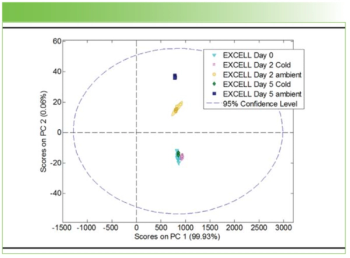
New Insights in Asphalt Research Using FT-IR Spectroscopy
A recent study highlights the critical role of Fourier transform infrared spectroscopy (FT-IR) in the qualitative and quantitative analysis of asphalt materials, focusing on its applications in quality control, material identification, and the analysis of modification and aging mechanisms.
Fourier transform infrared (FT-IR) spectroscopy has played an essential role in construction and infrastructure. FT-IR spectroscopy is a powerful tool for analyzing the chemical composition and structural properties of construction materials (1). The technique works by using IR light to identify chemical bonds within materials, providing detailed information about functional groups, contaminants, and structural integrity (1).
One key application of FT-IR spectroscopy is in characterizing polymers and polymer-based composites, helping to identify polymer types, monitor degradation, and detect additives or fillers (1). FT-IR is also valuable for analyzing paints, coatings, adhesives, and sealants, ensuring proper formulation, adhesion, and performance in protecting infrastructure (1).
A recent study explored the applicability of FT-IR spectroscopy in analyzing asphalt materials. An interdisciplinary study published in Fuels explored how FT-IR spectroscopy is used to characterize asphalt materials in applications such as quality control and predicting macroscopic performance (2). This study was led by Dongliang Hu from Chang’an University in China, and it brought scientists together from the University of Bologna and Chang’an University.
Asphalt is the backbone of road construction. It is a complex mixture that requires precise characterization to ensure the durability and safety of infrastructure (2). Understanding the composition of asphalt and its materials require molecular-level analysis. FT-IR spectroscopy can help in this regard, because it can identify specific chemical bonds and functional groups within the asphalt allows researchers to assess the quality and consistency of the material, ensuring that it meets the required standards for use in construction (2).
The review article begins with an introduction to the basic principles of IR spectroscopy, explaining how molecular vibrations correspond to specific IR spectra, which can then be correlated with the molecular structure of asphalt components (2). The review article then compares FT-IR spectroscopy with other spectroscopic techniques such as ultraviolet-visible (UV-vis) spectroscopy, Raman spectroscopy, and fluorescence spectroscopy (2). These comparisons demonstrated FT-IR’s ability to identify and characterize the components of asphalt at a molecular level, which is critical for understanding the material's properties and behavior (2).
Moreover, FT-IR spectroscopy has proven to be an effective tool in analyzing the modification mechanisms of asphalt. The review details how FT-IR can be used to monitor changes in the molecular structure of asphalt when it is modified with various additives (2). This is particularly important in the development of new asphalt formulations designed to enhance performance and durability (2). By understanding these modification mechanisms at a molecular level, researchers can optimize the formulation process, leading to more effective and longer-lasting asphalt materials (2).
The researchers also explored the integration of chemometric methods with FT-IR spectroscopy in this space. Chemometrics, which involves the application of mathematical and statistical techniques to chemical data, allows researchers to develop predictive models based on FT-IR spectra (2). These models can be used to forecast the behavior of asphalt under various conditions, aiding in the design of more resilient and durable road materials (2).
To conclude their review article, Hu and his team examined where the field is heading in the future. One significant area of interest is the combination of FT-IR with high-throughput experimental methods and other spectroscopic technologies (2). This approach could provide a more comprehensive understanding of the relationships between the microscopic composition of asphalt and its macroscopic properties (2).
The review also emphasizes the potential of integrating FT-IR spectroscopy with machine learning (ML) methods. By leveraging the power of ML, researchers could analyze large datasets of FT-IR spectra more efficiently, leading to faster and more accurate predictions of asphalt performance (2).
By highlighting the technique's applications in quality control, modification mechanism analysis, aging process monitoring, and performance prediction, the study provides a valuable reference for researchers and engineers working to improve the quality and durability of asphalt materials.
References
(1) Rocky Mountain Labs, FT-IR Analysis for Construction Materials. Rocky Mountain Labs. Available at:
(2) Zhang, H.; Zheng, F.; Zhang, J.; et al. Contributions of Fourier-Transform Infrared Spectroscopy Technologies to the Research of Asphalt Materials: A Comprehensive Review. Fuel 2024, 371 Part B, 132078. DOI:
Newsletter
Get essential updates on the latest spectroscopy technologies, regulatory standards, and best practices—subscribe today to Spectroscopy.





